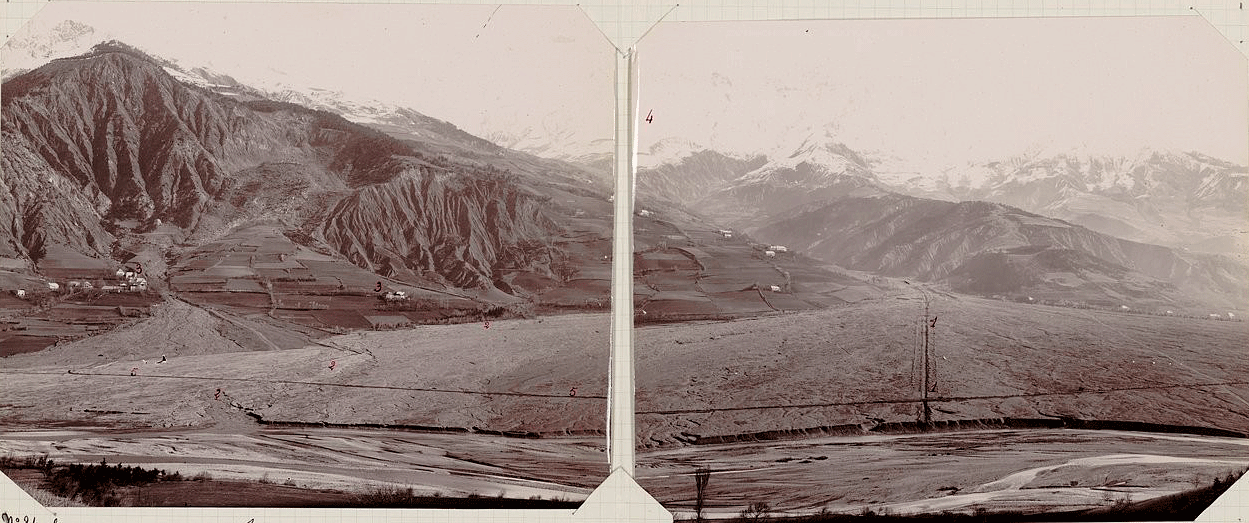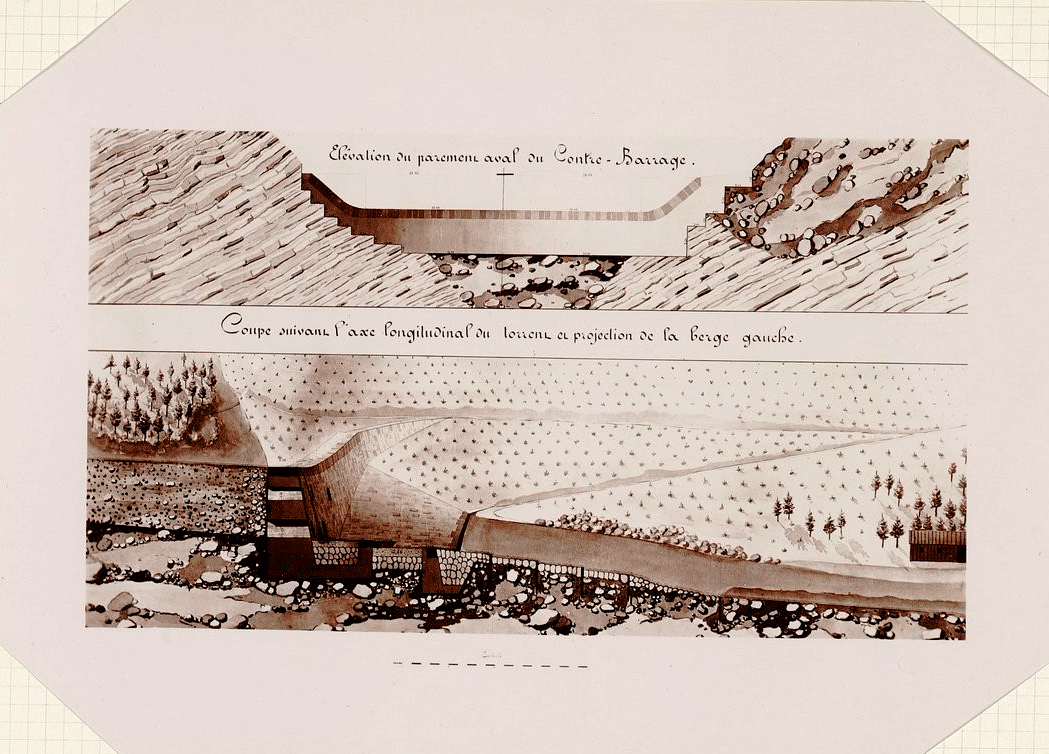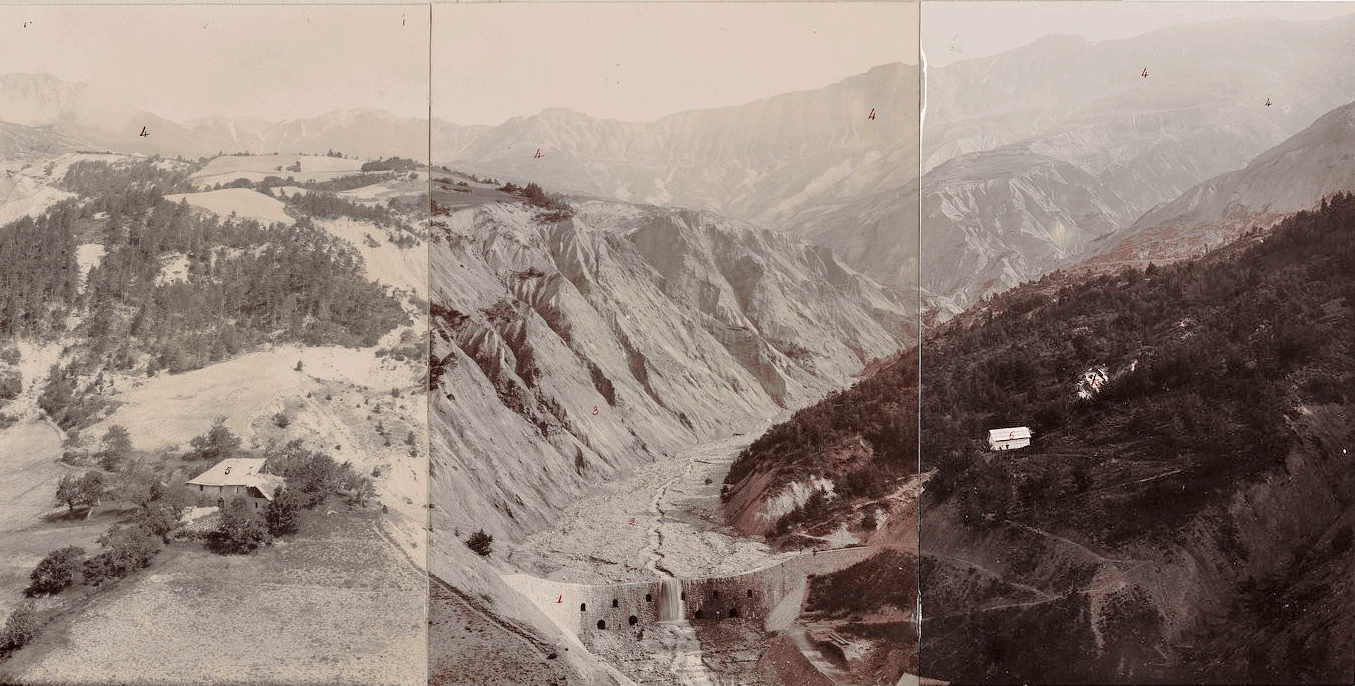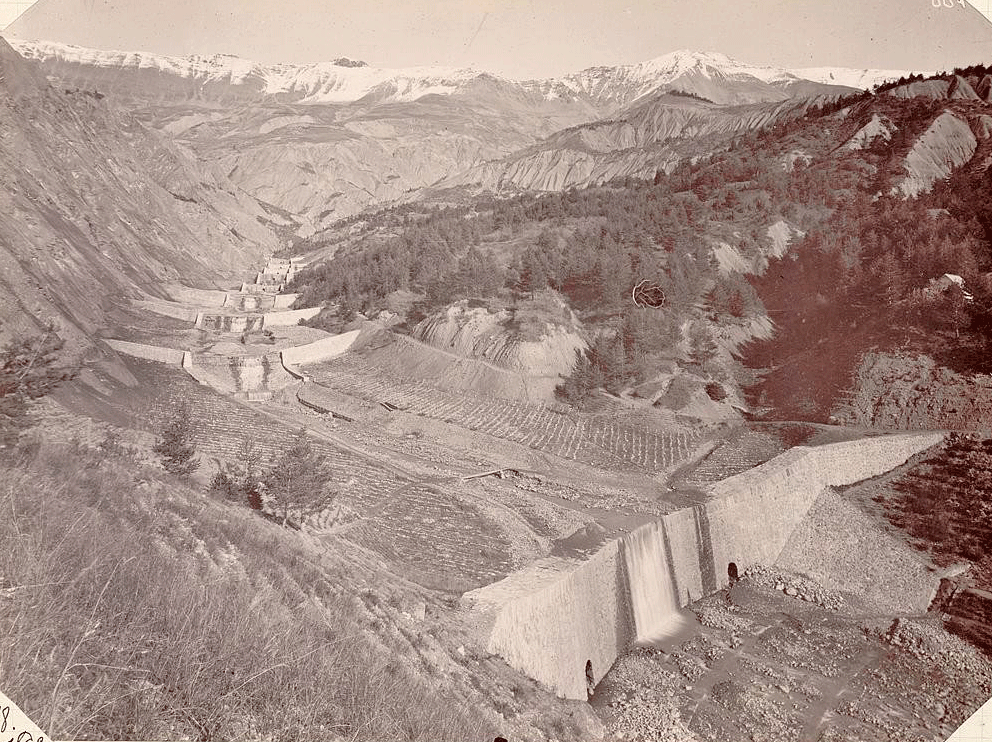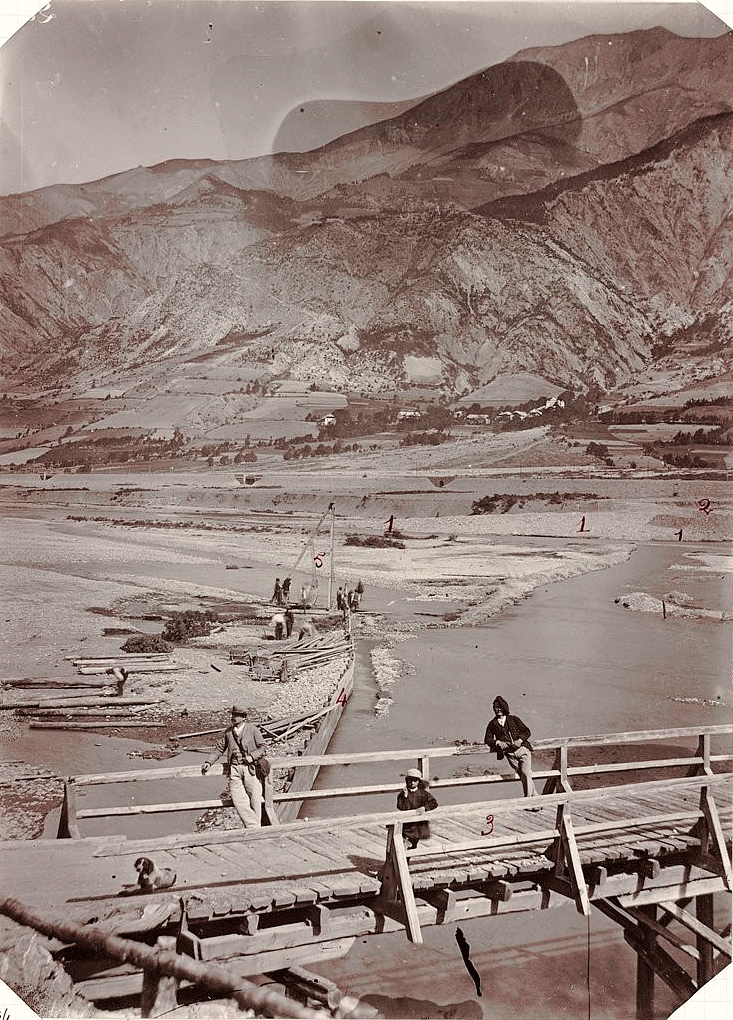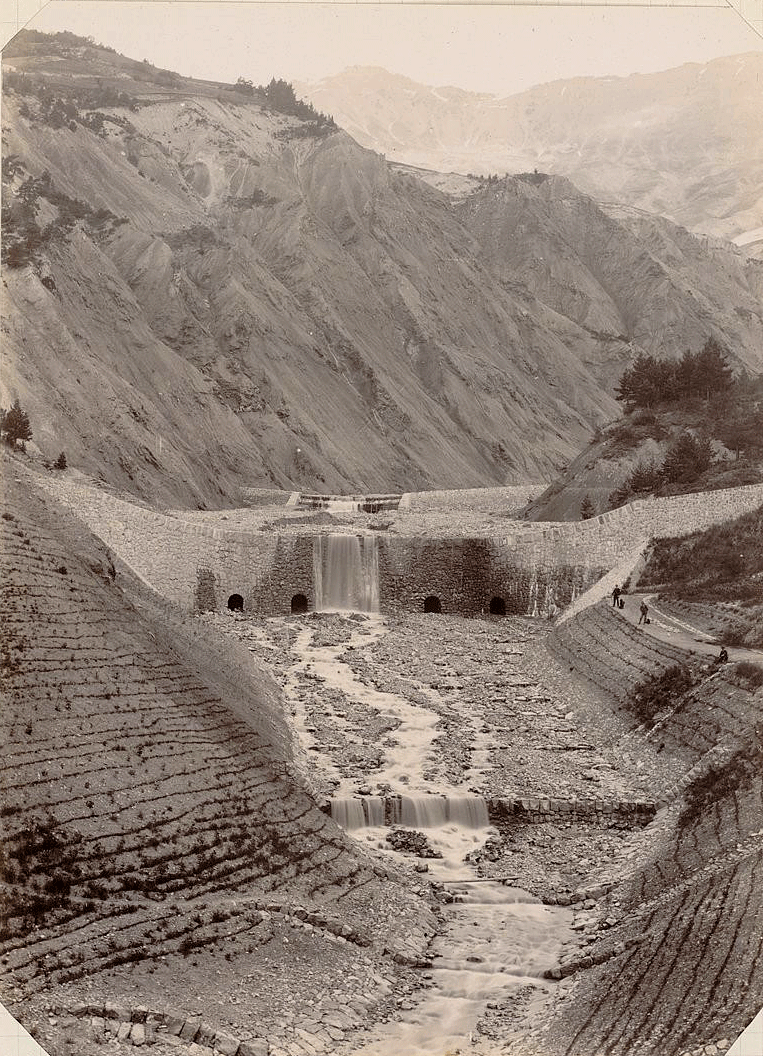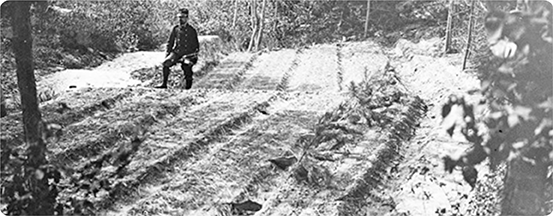The Riou-Bourdoux: how to tame this terrible torrent?
In the 19th century, the Riou-Bourdoux, the torrent that caused considerable damage in the lower Alps, was the subject of one of the most colossal torrential correction projects carried out in France by the Water and Forest Department.

While there are many torrents in the Ubaye valley capable of causing damage, the overflowing Riou-Bourdoux was undoubtedly the most feared.
This is what Prosper Demontzey had to say (about it):
"The Riou Bourdoux, famous throughout the country for the devastation it causes, is the most terrible and the largest of all the torrents in action in the Alps".
This forest engineer - one of the emblematic figures of the reforestation policy - set about a task deemed impossible: containing the torrent.
Work began as early as 1868, with the grass seeding of the upper part of the basin, followed by the planting of trees to stabilise the gullied land.
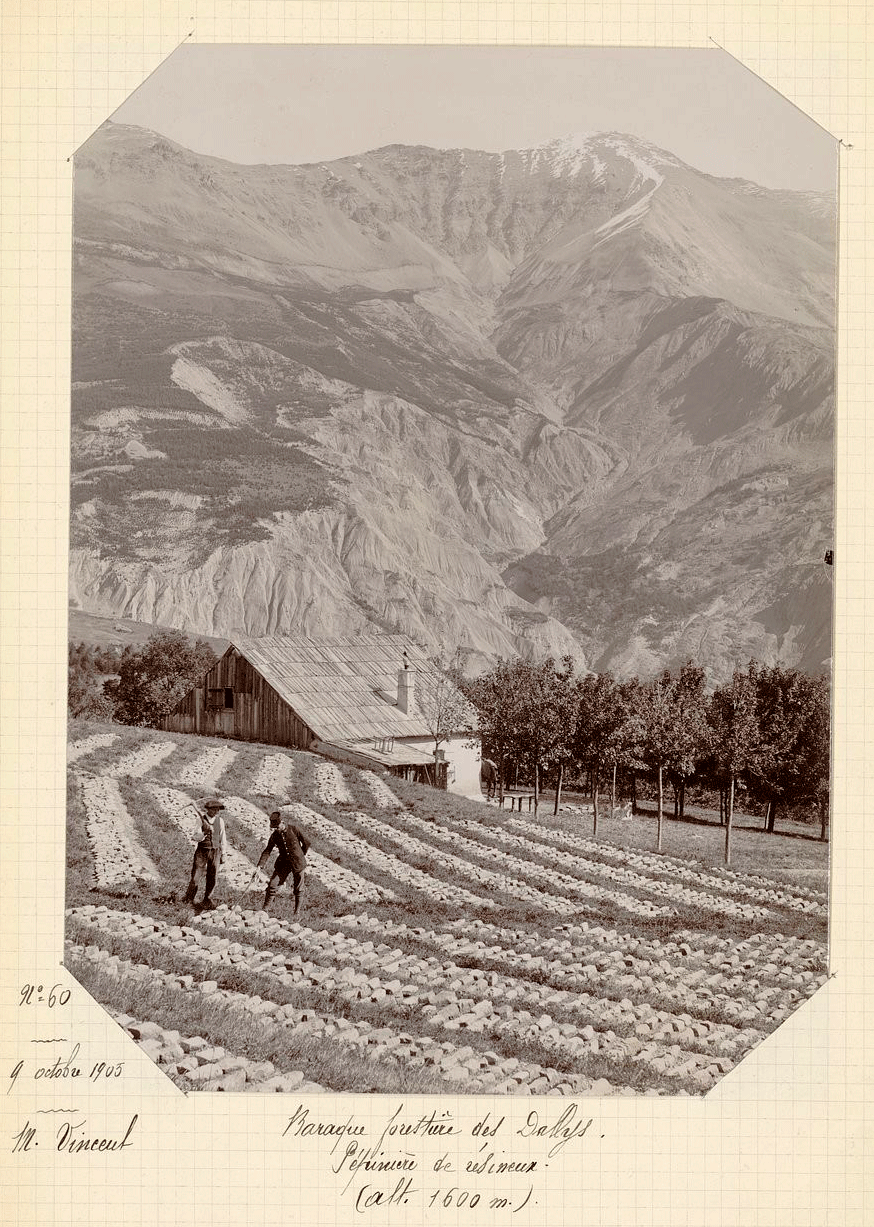
Two nurseries supplied the young trees, the one at Dallys supplying the softwoods and the one at Terreneuve the hardwoods.
Between May 1880 and October 1881, around 2,000 weirs and dams were built, the largest of which, dam no. 1, was an essential link in the system, as P. Demontzey explains:
"Intended to serve as the basis for the entire correction system, it was essential that this work be established in the most earnest/stringent/serious/ exacting conditions of solidity and durability. It was therefore given larger dimensions than those usually used.
Built as a horizontal arch, entirely of masonry using hydraulic mortar, the dam stands 8 metres high above the bed at the upstream face; its developed length is 81.50 m; its thickness at the curbing is 3.20 m, with a batter of one-fifth at the downstream face.
The foundations are 4.50 m deep.”
One has to imagine 300 men on this colossal site, armed only with picks, shovels and crowbars.
The "monster" has calmed down but has not become harmless. Industrial and commercial activities have developed on its alluvial cone, increasing the site's vulnerability. It is still under constant surveillance.
And nowadays at INRAE?
INRAE's research teams are still active in the field of natural hazards in mountain areas, focusing on issues relating to protection forests, hydrology, environmental engineering, flood monitoring and avalanches.
- The research unit ETNA and the IGE, which merged at the beginning of 2023, offers research and expertise about natural mountain risks and their forecasting.
- Within INRAE, the Mountain Ecosystems and Societies Laboratory ( LESSEM) conducts research on the dynamics of socio-ecosystems in mountains, with the aim of striking a balance between disciplinary depth and the pursuit of interdisciplinary research, between thematic contributions and methodological perspectives.
Articles by INRAE's scientists about torrential correction dams (in french):
- Piton, G., Carladous, S., Recking, A., Tacnet, J. M., Liébault, F., Kuss, D., Quefféléan, Y., Marco, O. (2019). Fonctions des barrages de correction torrentielle (Functions of torrential correction dams).Cybergeo : Revue européenne de géographie. ⟨10.4000/cybergeo.32190⟩ ⟨hal-02132860⟩
- Quefféléan, Y., Kuss, D., Fouquet, M., Paquier, A., Laigle, D. (2020). Modélisation des ruptures de barrages issus de glissements de terrain MTES actions ONF-B5 et INRAE-5.3.6 (Modelling dam failures resulting from landslides MTES actions ONF-B5 and INRAE-5.3.6), Research report, ONF INRAE, MTES. ⟨hal-03130033⟩.
Bibliographic sources
Works by Prosper Demontzey in Gallica (in French):
- Demontzey, P. (1882). Traité pratique du reboisement et du gazonnement des montagnes (Practical treatise on mountain reforestation and turfing). 2nd edition, 580 p.
- Demontzey, P. (1889). La restauration des terrains en montagne au pavillon des forêts (Mountain land restoration at the forest pavilion).168 p., voir p. 90-95.
Text written by Catherine Tailleux (INRAE-DipSO).
Thanks to Guillaume Piton, researcher in hydraulics, geomorphology, sediment transport and hazard mitigation (Univ. Grenoble Alpes, INRAE, IGE) for his proofreading.
How to cite: Focus Agate: The Riou-Bourdoux: how to tame this terrible torrent?, Catherine Tailleux (INRAE-DipSO), february 2024. https://agate.inrae.fr/agate/fr/content/focus


